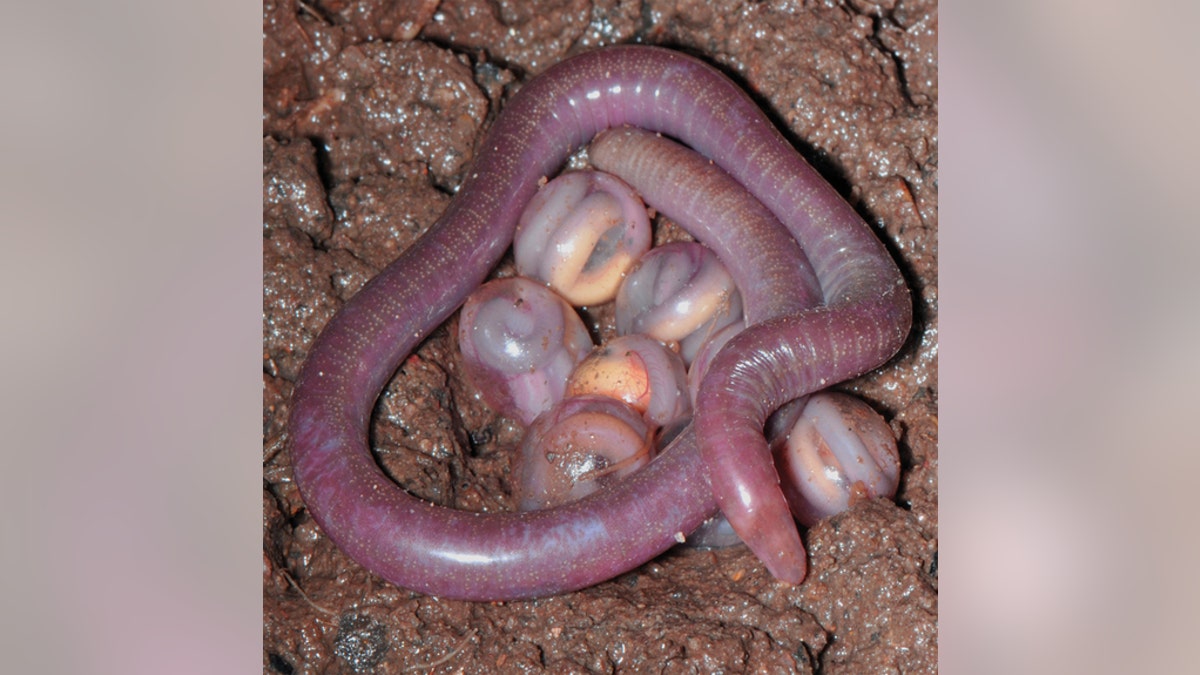
A doting caecilian mother coils around her eggs, which will hatch out mini-adults within two to three months. (SD Biju, www.frogindia.org)
Newly legless amphibians live out their lives in underground burrows, tending their slimy pink young, which emerge from their eggs as miniature adults.
If they sound like something out of a monster movie, they look it too: These creatures, part of a group of animals called caecilians, could pass for enormous earthworms. But they're actually vertebrates with backbones, more like salamanders or frogs.
The discovery of new vertebrates is rare, especially outside of tropical rain forests, but the new caecilians come mostly from human-inhabited areas in northeastern India. They've escaped notice for so long because these burrowers spend their lives underground, out of sight of human eyes.
To discover the new family, researchers led by the University of Delhi's S.D. Biju spent hundreds of hours spread over five years digging in soil at 238 locations in northeast India. They found more than 500 caecilians, and genetic testing showed that the wormlike creatures did not fit into the known family groupings of these animals. In fact, they seem to have split off from their closest relatives in Africa more than 140 million years ago. [See Images of Baby Caecilians]
Biju and his colleagues, who report their findings Tuesday (Feb. 21) in the journal Proceedings of the Royal Society B, dubbed the new family Chikilidae.
Females of this family build nests for their young underground, laying eggs and coiling around them for the two to three months it takes the embryos to hatch. Unlike frogs and other amphibians that develop through a tadpole or larva stage, these babies emerge as miniature adults. Although not seen in the new species, some types of caecilians get an extra nutritional boost from mom when they hatch: They literally eat the skin off her back.
The habitat of these bizarre animals is under threat, as farming takes over forest land in northeast India, according to the University of Delhi. Although caecilians are harmless, local lore has it that they are incredibly venomous snakes, another factor that threatens these mysterious, secretive creatures.
Copyright 2012 LiveScience, a TechMediaNetwork company. All rights reserved. This material may not be published, broadcast, rewritten or redistributed.
